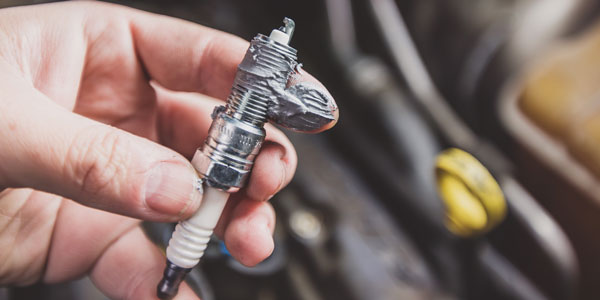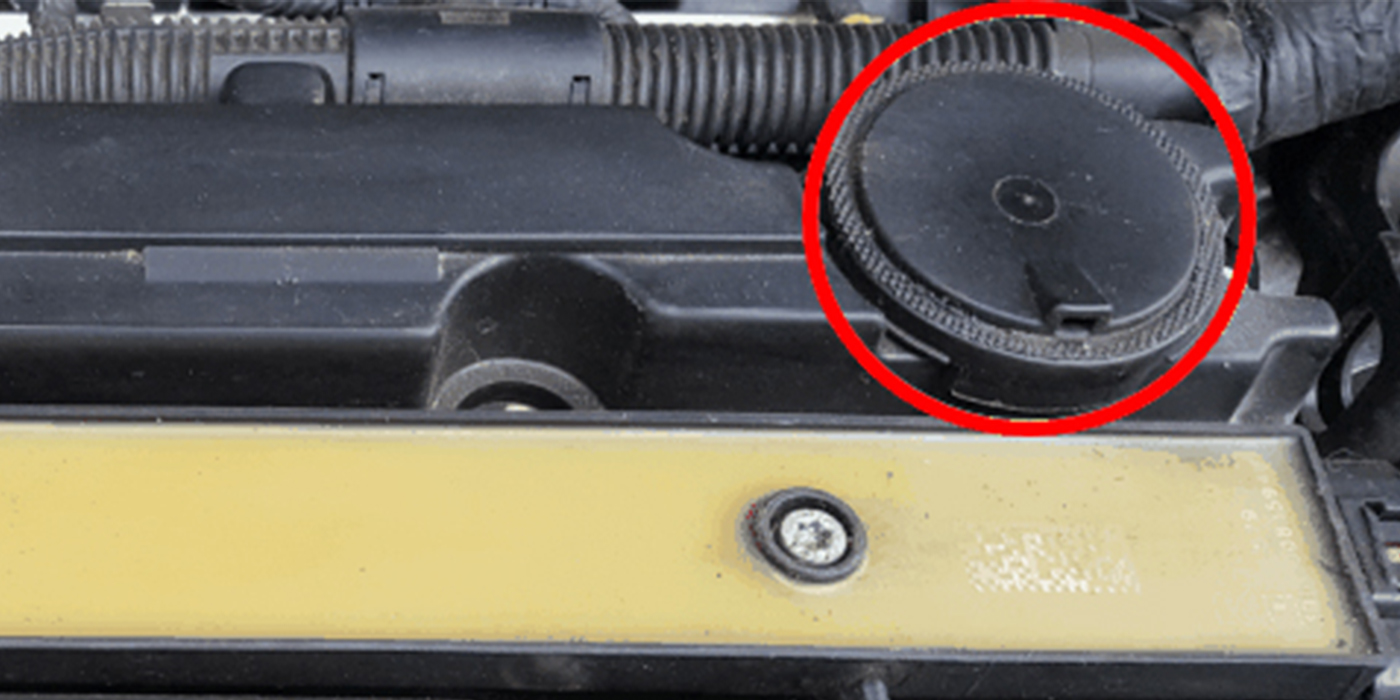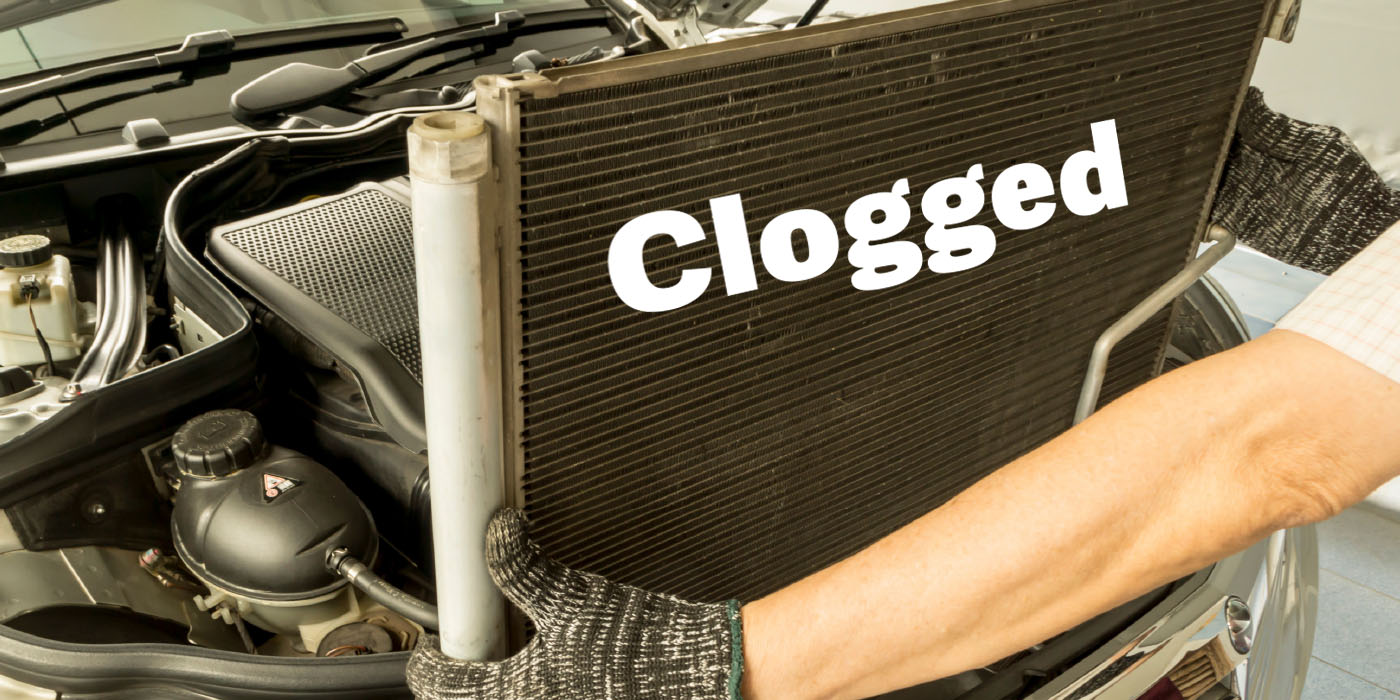A spark plug that has racked up miles should have a brownish or grayish color on the insulator and electrodes, but some gas additives have been known to turn fresh insulators blue, pink or purple. Black is the color of oil fouling. Deposits like these could indicate higher than normal levels of oil vapor could be present or the oil has a higher than recommended volatility rating.
HOT & COLD
Heat range is the speed at which a spark plug can transfer heat from the firing tip to the cylinder head water jacket and into the cooling system. If the heat range is too cold, the spark plug will be unable to properly self-clean by burning off carbon deposits. If a plug is too hot, it will cause pre-ignition problems.
TIP: Always let an engine with an aluminum cylinder head cool down to help expedite safely removing the spark plugs.
Erosion
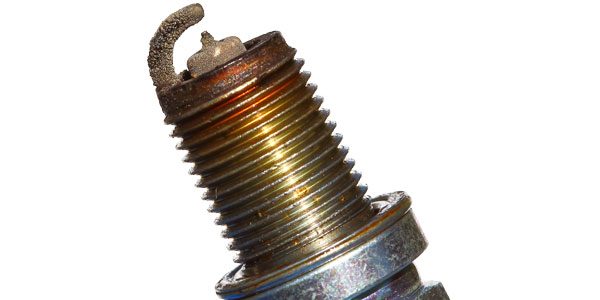
Every time a spark plug fires, the spark burns a few molecules of metal off the plug’s electrodes. Over time, this eats away the electrodes and rounds off their sharp edges. The erosion gradually increases the gap between the electrodes, which, in turn, increases the firing voltage required to generate a spark. Eventually the ignition system reaches a point where it fails to produce enough voltage and the plug misfires.
NOT A LEAK!
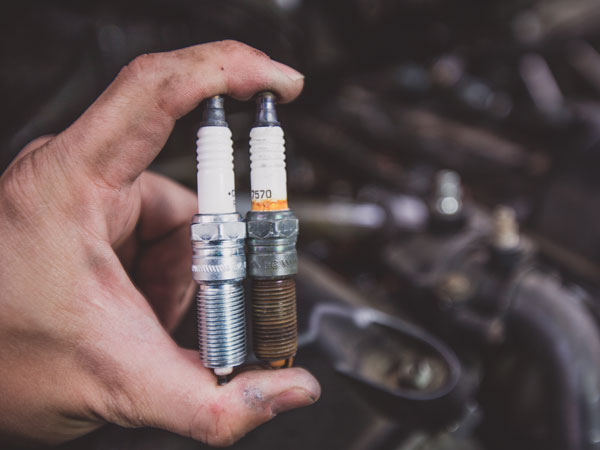
Corona stains on the exposed ceramic body are normal. Corona stains are caused by the high amount of static electricity attracting particles of oil and dirt to the body of the plug — not by blow-by gases or thermal distress.
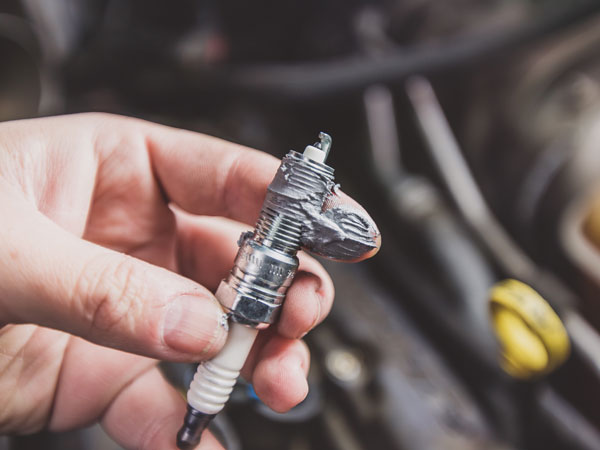
TIP: Always tighten plugs to OEM specifications. Over tightening plugs in aluminum heads will usually damage the threads in the cylinder head. Do not use anti-seize on plated plugs being installed in an aluminum head because anti-seize can change torque values. If the OE doesn’t use anti-seize, you shouldn’t either.
Flash Over or Carbon Tracking
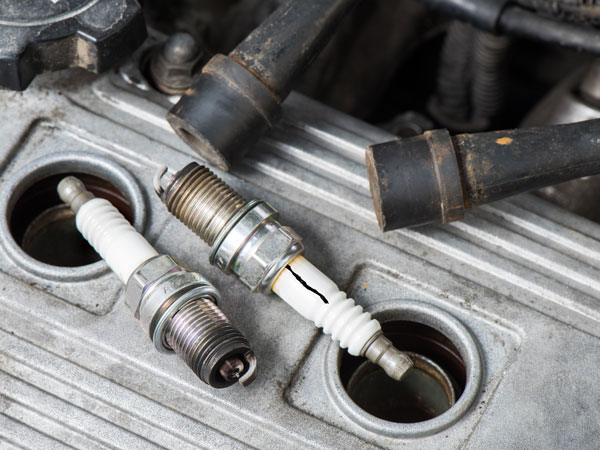
The most common failure in COP ignitions is carbon tracking or “flash over” on the spark plug insulator. Carbon tracking is usually caused by oil, dirt or moisture creating a path to ground over the spark plug insulator. However, a severely eroded spark plug electrode will increase firing voltages so much that the spark will seek the point of least resistance, which is either through the spark plug boot or down the insulator to the metal shell. If a carbon track is found on a spark plug, an identical track will be found inside the spark plug boot. If the boot is serviced as a replacement part separate from the coil, it should be replaced at the same intervals as the spark plugs. If the boot is available only with the coil assembly, the spark plugs should be replaced at the recommended intervals and care should be taken not to contaminate the boot or insulator with dirt or oil.
Article courtesy Underhood Service.

